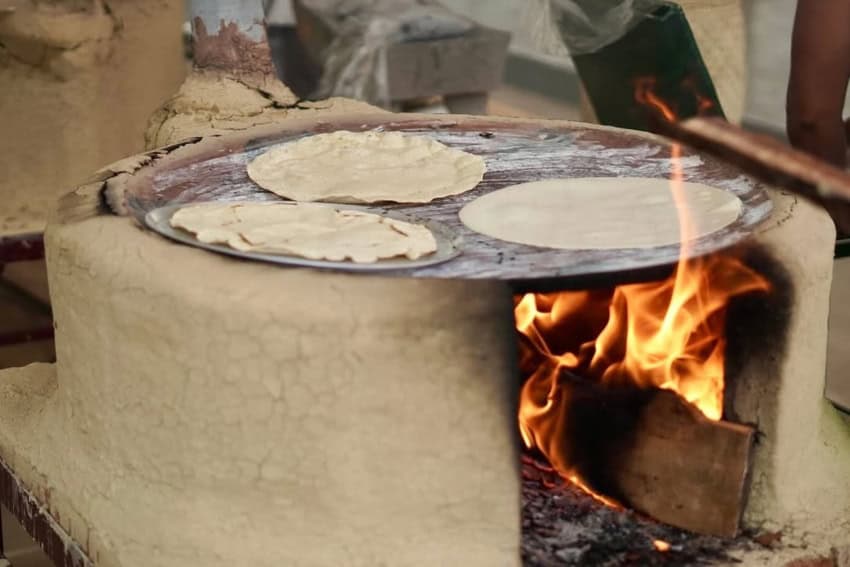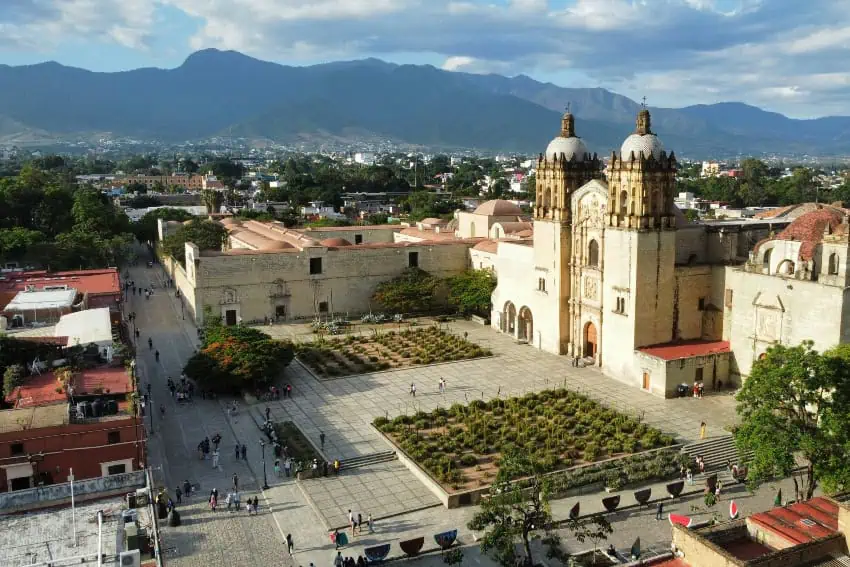In other articles, I’ve written about the enthusiasm my work sparks among those around me. Friends and relatives are always suggesting something — a fruit, a vegetable, a recipe — that they consider essential to our gastronomy and worth sharing with you.
But the person who has turned out to be my most unlikely muse is my boyfriend’s nana, Sabina. “Nana” may sound infantilizing — rest assured, he’s perfectly capable of tying his own shoes — but the name has stayed, and so has she. These days, she runs our household with brisk efficiency, cooking and keeping order, all while standing scarcely taller than the kitchen counter. Yet her presence is formidable, the kind of authority you’d expect from a Oaxacan general in civilian disguise. She is not quick to offer affection, and for months I misread her silence as disdain, convinced she had quietly declared me unworthy.

Then one afternoon, she overheard me on the phone with my mother, asking where I might find different varieties of beans for an article and video I was planning on Mexico’s deep relationship with frijoles. When I hung up, Sabina simply asked, “When do you need them?” A week later, she placed in my hands a small stash of beans she had carried from home — the very beans she saves each year to plant again in her own soil.
That was the beginning. Last month, for her town’s fiesta, she prepared a mole and quietly set aside a generous portion for us. More recently, when she returned from Oaxaca, she brought back tlayudas as a souvenir. She asked me, with a rare glint of mischief, if I thought you might be interested in learning about them. Which is how I find myself staring at three oversized tortillas she had been saving with great care for her own family.
Tlayuda. Isn’t that a Mexican pizza?
(Sighs in discomfort) Well, no. Not exactly. If one wants to be orthodox, the comparison is a little crude. But I understand where it comes from.
Strictly speaking, tlayuda refers to the tortilla itself — enormous, durable, designed for sustenance on long journeys. Much as the burrito tortilla evolved in northern Mexico to serve the needs of ranch hands and travelers, the Oaxacan tortilla was engineered to be filling and resilient. The very name suggests strength and endurance.
Etymology, though, is where things get tricky. The common claim is that tlayuda derives from the Nahuatl tlao-li (shelled corn). This, however, is inaccurate. Shelled corn in Nahuatl is tlayolsiuali. Wouldn’t tlaxcalli — the word for tortilla — be a more logical connection? Beyond that, the “ll–y” sound at the heart of tlayuda did not exist in pre-Hispanic languages, which makes the Nahuatl origin dubious at best.
There is another reason to be skeptical. Oaxacans are famously protective of their culture, and with thirteen Indigenous groups in the state — each with its own language, customs, and rivalries — it is hard to imagine them embracing a Nahuatl name for a distinctly Mixtec-Zapotec dish. In Mixtec, tortilla is xita; in Zapotec, eta or gueta. The linguistic puzzle remains unsolved, but Nahuatl seems like the least likely candidate.
View this post on Instagram
A third clue lies in Spanish itself. In the 19th and early 20th centuries, the word tlayudo was used as an adjective to describe someone strong, resistant and enduring. “Did you see how tlayudo Juanito is? He trimmed all the trees as if it were nothing.” The term likely derived from talludo, meaning someone mature, even beyond maturity. This, to me, feels like the most elegant fit. The tortilla that resists, that endures.
And so the name carries its own definition: a tough tortilla, meant to be reheated, meant to last. Enormous enough to serve as a complete meal, designed for travel or a long day’s labor. Which brings us back to the dish itself.
The traditional tlayuda
We may never know the precise moment the tlayuda emerged, but its lineage surely stretches back to the early days of nixtamalization, when Indigenous peoples needed food that could travel and was portable, resilient and nourishing. The earliest versions probably included beans, chapulines, quelites, and other endemic plants, each adding both flavor and nutrition.
The later additions of chorizo, cecina, tasajo, and chicken were unmistakably products of the Spanish conquest and the centuries of culinary mestizaje that followed.
By the 1920s and ’30s, novels described the tlayuda as being used like flatbreads elsewhere in the world. Torn apart to act as edible utensils, like pita in the Middle East, naan in India, Greek barley bread, Turkey’s bazlama, the tortillas of the Americas, or Ethiopia’s injera. Around the same time, another description surfaced. It was a large tortilla, reheated in lard, topped with bean paste, chili, cheese or quesillo, and cabbage.
From there, the modern form was inevitable. Today, a proper tlayuda is crisped with lard, spread with beans, layered with cecina and chorizo, crowned with avocado, preferably a green salsa, perhaps a seasonal quelite, chapulines for crunch, and, of course, cheese. It is at once rustic and baroque. A dish that can carry a day’s worth of sustenance.

Nutritionally, it might even be one of Mexico’s most complete meals. If that is, one applies moderation to the chorizo and cheese. I can’t provide scientific proof, but I’d wager it tastes 50% better when shared, and 100% better with a cold beer.
And if you’d rather not cook your tlayuda in lard, stay tuned for the video. I’ll share a tip Sabina herself taught me.
Friends, if you don’t happen to live near a shop that sells Oaxacan ingredients and tlayudas, you have only two options. Either book a trip to Oaxaca and eat them fresh at the market, or pray devoutly that a Sabina will one day appear in your life.
María Meléndez is a Mexico City food blogger and influencer.